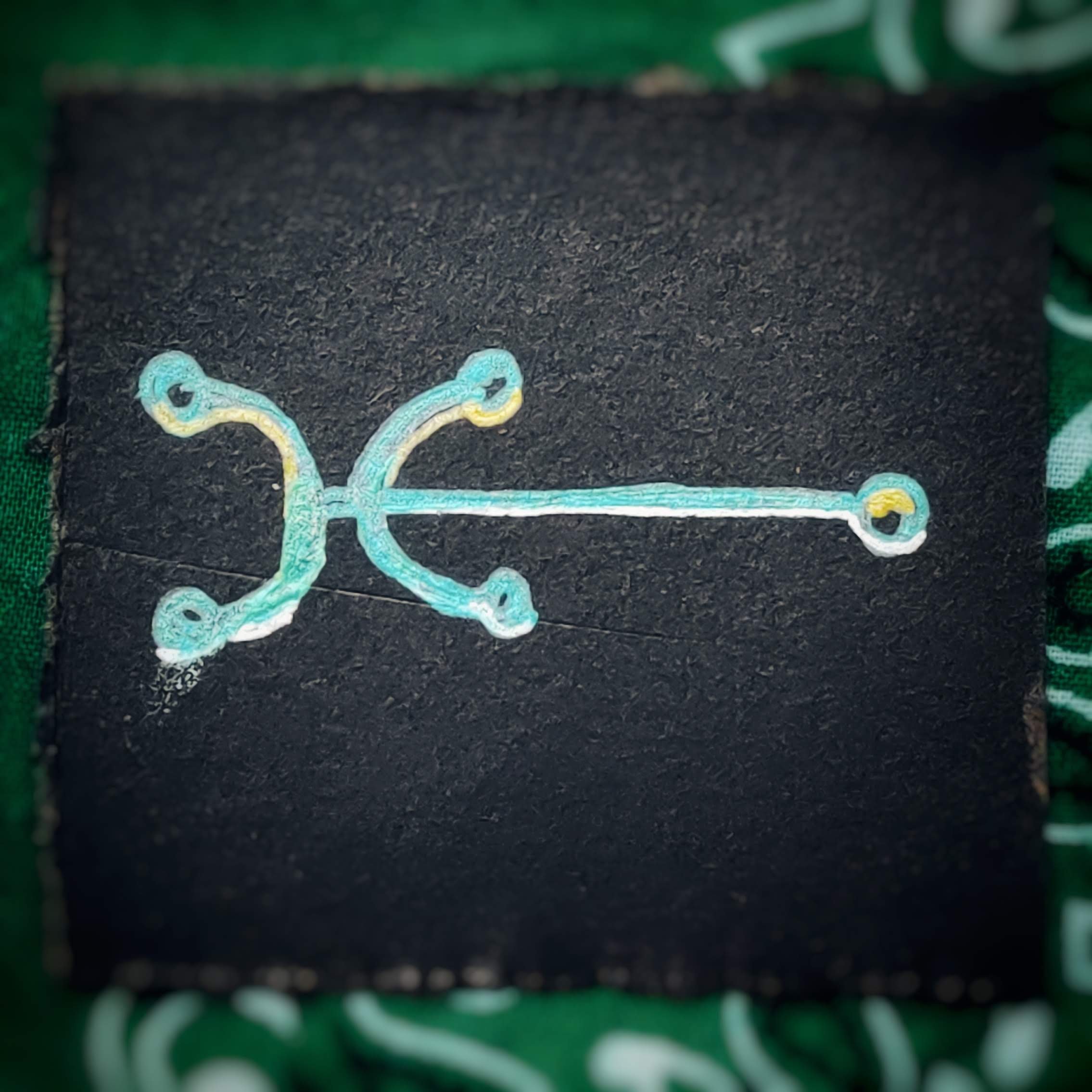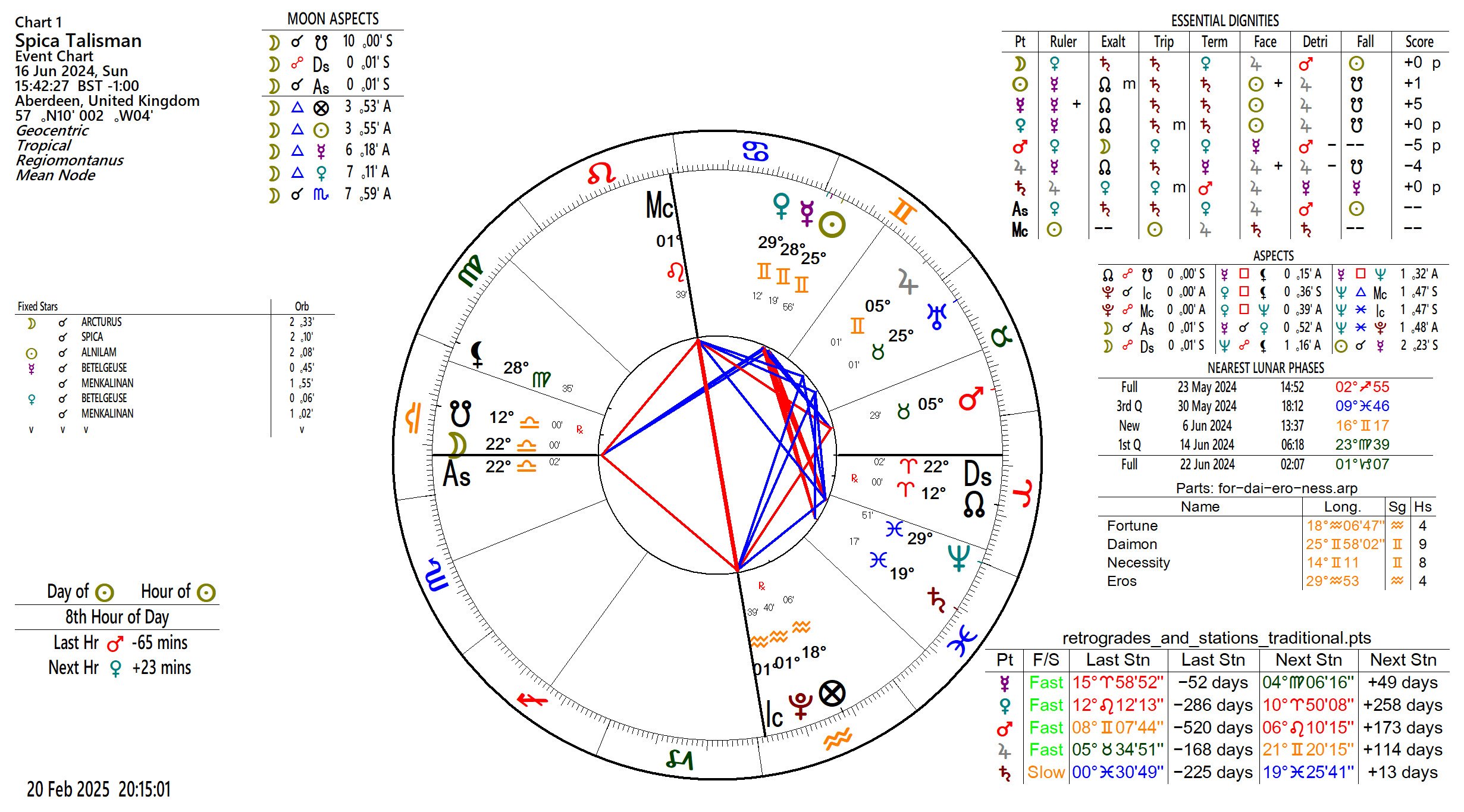Spica Talisman - Queen of the Sylphs - Star of Beauty and Reason






Spica Talisman - Queen of the Sylphs - Star of Beauty and Reason
These talismans were crafted on 16th June 2025 as Spica was rising with the Waxing Moon applying by conjunction to Spica. There is one remaining, a rolled 14k-gold-on-brass pendant with a 4mm x 6 mm oval cabochon.
This election features unique support from Venus and Mercury, the planetary nature to which Spica is associated in traditional sources. The waxing Moon is applying to Spica by conjunction and will then connect by trine to the Sun, Mercury, and Venus, which due its infrequency as a condition make this a uniquely powerful heaven to craft a talisman under.
Spica, Alpha Virginis, the brightest star in the constellation of Virgo, the Virgin, held within tropical Libra, is known from the traditional sources of western astral-magic to cause the wearer to accumulate wealth; to be delivered swiftly from and take away distress and difficulty; to conquer in all challenges, such as lawsuits; it confers honesty and joyfulness, freeing us to enjoy life’s simple, refined, and virtuous pleasures. It is associated with the natures of Mercury and Venus, and known as the ‘Star of Beauty and Reason’. Emerald and its associated virtues proceed from this star. The associated herbs enhance, along with emerald, equally cause the bearer to accumulate wealth.
From the great synthesis of knowledge found in Rosenberg’s Secret of the Ancient Skies, as well as the work of many past and contemporary astral magicians, which resonates with those of other astrological traditions, we can add the following associations. Spica grants prominence, honour, power, and extraordinary gifts. Gifts associated with learning, ‘ecclesiastical preferment’, and the arts. It leads one to be well-educated, and to strengthen literary, artistic, and musical ability. Spica grants a deep connection with wellspring of inspiration. Enhanced productivity as it relates to these skills is also tied to Spica.
These Spica Talismans are to be crafted with exceedingly green Emeralds (4mm round and 6mm x 4mm oval cabochons) marked with the seal of Spica given in the De Quindecim Stellis and related sources. The stellar seal and stone are combined with Sage, ‘a useful and healing herb’ and other related plants as per the instructions given in the sources. This will take place during a ritual culminating to the rising of the Moon with Spica on the Ascendant. The celestial configuration of the Moon with Spica then applying by trine to the associated planets Mercury and Venus, as well as the Sun, who is the ruler of the day and hour of the election, is both synergistic and rare. But Spica who we learn in the grimoire tradition is ‘friend of the Sun and of the Moon’, there is powerful support from both luminaries which are on the wax. Spica is connected across time and place with the coming of Spring, as well as the power of Autumn, and the abundances of both.
This configuration will not occur again until 2028. During which Uranus in Gemini perhaps adds instability to the conditions. Afterwards it will not occur until 2043. While similar heavenly conditions will appear, making such a talisman approachable in 2041, with Venus and Mercury in Libra, due to these planets affection for the Sun, the Moon will always be hidden in the rays of the Sun or balsamic, and at this point the light of the Sun is on the wane and in his detriment.
To the Babylonians, Spica was MUL.ABSIN, the Furrow, representing the goddess of weather and grain, Shala, the consort of the weather god Adad. The Furrow is often prayed to, along with other important stars and asterisms to gain favour and remove evil in the cuneiform knowledge of Mesopotamia. Together with the Frond, the remaining western half of what we know as the constellation Virgo, are tied to, as Gavin White writes, “autumnal abundance of the earth as symbolised by these two goddesses of the Frond and the Furrow, which respectively represent the two cultivated foodstuffs of Babylonia - dates and barley…they made their annual appearance as the dates started to ripen.” Equally, Spica is linked to the goddess Ishtar.
For the ancient Greeks,Spica was associated with Demetra and her shaft of wheat. For the ancient Egyptians, this star was the “Star of Prosperity” and was tied to Isis and Hathor.
Spica is known as Chitrā, “the bright one”in Jyotisha and is the namesake and anchor for the associated nakshatra. This is Spica as the many coloured, bright jewel and ruled by Tvastr, the heavenly architect, who, along with his children possess the power of great skill, maya and magic.
For the Chinese it is known as Jiǎo Sù yī, “the First Star of the Horn” of Qīnglóng,the Great Azure Dragon God of Spring.
In Arabic known as al-Simak, “the Unarmed One”, linking it to peace and healing.
In Jack Stratton-Kent’s work Cyprian’s Office of Spirits, we are introduced to grimoire sources that give Spica as the palace of Paralda, Queen of the Sylphs, “which are spread in the air, these are the prettiest and kindest creatures in the world.” Paralda, their queen, is known to introduce practitioners to these air spirit-people who act as “intermediates between man and immaterial creatures.” The Sylphians “cultivate literature, music, and the occult sciences, and have a passionate love of dance and perfumes”, they aid those who are worthy of their attention.
Each talisman comes with a jute pouch and a small amount of associated herbs and resins.
On rolled 14k gold on brass, these are more expensive than sterling silver, but are also very fitting. Gold filled findings for jewellery making. "Rold gold" (or "filled gold") comprises a solid layer of 14k gold 14k permanently bonded to brass. The minimum layer of gold must equal at least 1/20th the weight of the total item. It is very hard wearing and under normal wear the gold will not peel or flake, unlike gold plate, and is commonly used as a more economical alternative to pure gold. Email me if you have any questions
